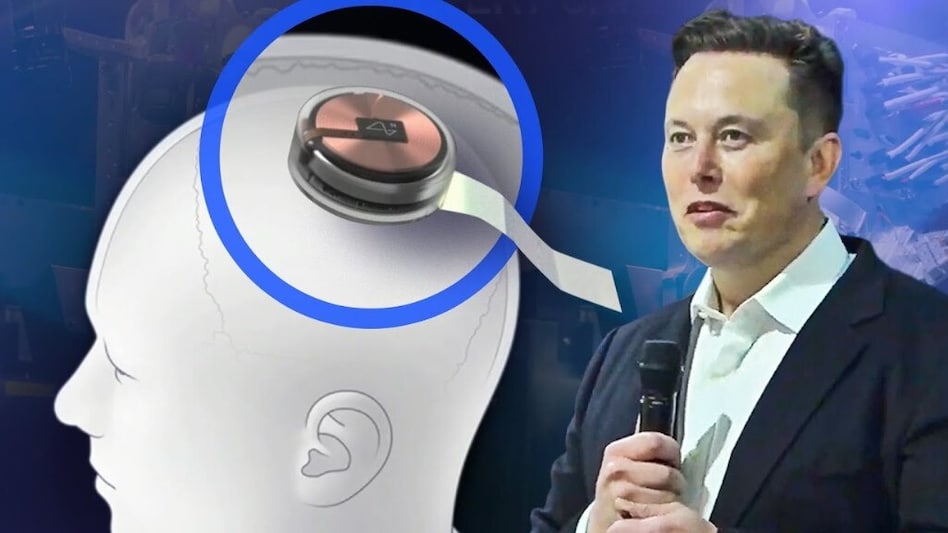On March 31, 2025, Elon Musk announced a groundbreaking development for Neuralink, his brain-computer interface company: the Blindsight implant, designed to restore vision for the blind, could be implanted in humans within six to twelve months. This bold claim, made during a town hall in Wisconsin, has sparked global excitement and skepticism. With the U.S. Food and Drug Administration (FDA) granting Blindsight “breakthrough device” status in September 2024, the path to human trials is accelerating. While scientists urge caution, the promise of a chip that bypasses damaged eyes to deliver visual data directly to the brain’s visual cortex represents a monumental leap in neurotechnology, potentially transforming lives and even redefining human perception.
The Blindsight Vision
Blindsight aims to restore sight for those who have lost it, including individuals blind from birth, by directly stimulating the visual cortex—the brain region responsible for processing visual information. Unlike traditional retinal implants, which require functional optic nerves, Blindsight bypasses the eyes entirely. A microelectrode array, implanted via a surgical robot, captures data from an external camera and activates neurons to create visual perceptions. Musk has likened the initial experience to “low-resolution Atari graphics,” but with potential to evolve into vision surpassing natural human capabilities, possibly including infrared or ultraviolet perception.
The technology builds on Neuralink’s broader mission to interface with the human brain. The company’s first product, Telepathy, enables thought-controlled device operation, as demonstrated by patients like Noland Arbaugh, who played chess using only his mind. Blindsight, however, targets a more ambitious goal: restoring a sense lost to millions. Musk’s claim that it could help even those born blind—whose visual cortex has never processed natural vision—sets it apart from existing prosthetics, which rely on residual eye function.
FDA Breakthrough Status and Timeline
The FDA’s “breakthrough device” designation, awarded in September 2024, underscores Blindsight’s potential to address unmet medical needs. This status expedites development and regulatory review for devices tackling life-threatening conditions, offering Neuralink priority FDA feedback and a faster path to approval. While the designation doesn’t guarantee safety or efficacy, it signals confidence in Blindsight’s promise. Musk’s announcement of human trials within six to twelve months aligns with this accelerated timeline, with Neuralink actively recruiting participants in the U.S., Canada, and the U.K. for vision restoration studies.
The company’s progress is notable. Neuralink received FDA approval for human trials of its brain-computer interface in May 2023, following successful animal tests. By January 2024, the first human implant was completed, with patients demonstrating thought-controlled actions. Blindsight builds on this foundation, with monkey trials showing healthy outcomes after years of implantation. Musk’s claim of a 2025 rollout, though ambitious, reflects Neuralink’s rapid pace and Musk’s signature optimism.
The Science and the Skepticism
Blindsight’s mechanism involves a coin-sized implant with thin, threadlike electrodes inserted into the visual cortex. A camera, likely mounted on glasses, captures visual data, which a processor converts into electrical signals to stimulate neurons, creating rudimentary images. Early iterations may produce pixelated visuals, akin to early video games, but Neuralink aims to increase electrode density—potentially exceeding 1,000— to enhance clarity. Musk’s vision of “superhuman” sight, including multispectral wavelengths, draws comparisons to sci-fi, like Star Trek’s Geordi La Forge.

Scientists, however, temper expectations. Philip Troyk, a biomedical engineer at the Illinois Institute of Technology, notes that Blindsight is more assistive than a cure, akin to a cane or guide dog. Restoring natural vision remains beyond current technology, especially for those blind from birth, whose visual cortex may lack developed pathways for processing sight. Gislin Dagnelie, a vision scientist at Johns Hopkins, criticizes Neuralink’s lack of detailed preclinical data, calling their claims “superficial.” Past visual prosthetics, like the Argus II, achieved limited success but faced challenges, including brain scarring and device obsolescence, raising concerns about long-term safety.
Despite skepticism, Blindsight’s potential is grounded in Neuralink’s advancements. The company’s higher electrode count could improve image resolution compared to earlier devices, like Troyk’s 400-electrode implant. Successful monkey trials, with one implant functioning for three years, suggest durability. Neuralink’s use of a surgical robot enhances precision, reducing risks associated with implantation. While challenges remain—such as signal interpretation in congenitally blind patients—the technology’s ability to bypass eyes and optic nerves opens new possibilities for millions with total blindness.
The Human Impact
Blindsight could transform lives for the estimated 2.2 billion people worldwide with vision impairment, including 40 million who are blind. For those who have lost sight due to trauma or disease, the implant offers a chance to regain visual perception, even if initially crude. For congenitally blind individuals, the prospect is more complex but revolutionary, potentially enabling them to experience vision for the first time. Patients like Brian Bussard, who received a similar visual prosthesis in 2022, report seeing basic shapes after years of blindness, hinting at Blindsight’s potential.
Amara, a hypothetical patient, illustrates the stakes. Born blind in Ethiopia, she immigrated to the U.S. at ten. At eighteen, she could be among Blindsight’s trial participants, experiencing flashes of light or shapes for the first time. While early visuals may be grainy, the ability to discern objects or navigate spaces could profoundly enhance her independence. Musk’s long-term vision—enhancing sight beyond human limits—could one day allow her to perceive infrared, opening new ways to interact with the world.
Ethical and Practical Challenges
Blindsight’s promise comes with hurdles. The complexity of implanting electrodes in the brain raises safety concerns, as seen in Neuralink’s past FDA rejection in 2022 over issues like battery safety and wire migration. Animal testing controversies, including allegations of suffering in monkey trials, have drawn scrutiny from groups like PETA, though a 2023 USDA investigation found no welfare breaches. The cost of such technology, potentially in the tens of thousands, raises accessibility questions, and long-term maintenance—software updates, replacements—remains unclear.
For those born blind, the brain’s ability to interpret new visual signals is uncertain. Neural pathways for vision may be underdeveloped, requiring extensive rehabilitation to make sense of Blindsight’s output. Musk’s claim of “superhuman” vision, while tantalizing, is speculative, with experts like Fernández noting that even basic vision restoration is untested in this population. Overhyping risks misleading patients, as seen in the Argus II’s eventual discontinuation, leaving users without support.
A Step Toward the Future
Neuralink’s Blindsight represents a bold step in neurotechnology, backed by Musk’s vision and resources. With $424.7 billion in wealth, he can sustain projects that others might abandon, as seen with SpaceX and Tesla. The FDA’s breakthrough status and successful animal trials lend credibility, but the road to widespread use is long. Human trials, set to begin by mid-2026, will test safety and efficacy, with results shaping Blindsight’s future.
If successful, Blindsight could redefine disability, offering not just sight but a new frontier in human augmentation. Posts on X reflect cautious optimism, with one user stating, “If Musk pulls this off, it’s a game-changer for the blind.” Critics, however, warn of hype, with another noting, “Sounds amazing, but let’s see the data.” As Neuralink pushes forward, the world watches, hopeful yet wary, for a chip that could write vision into the brain—and perhaps beyond.



